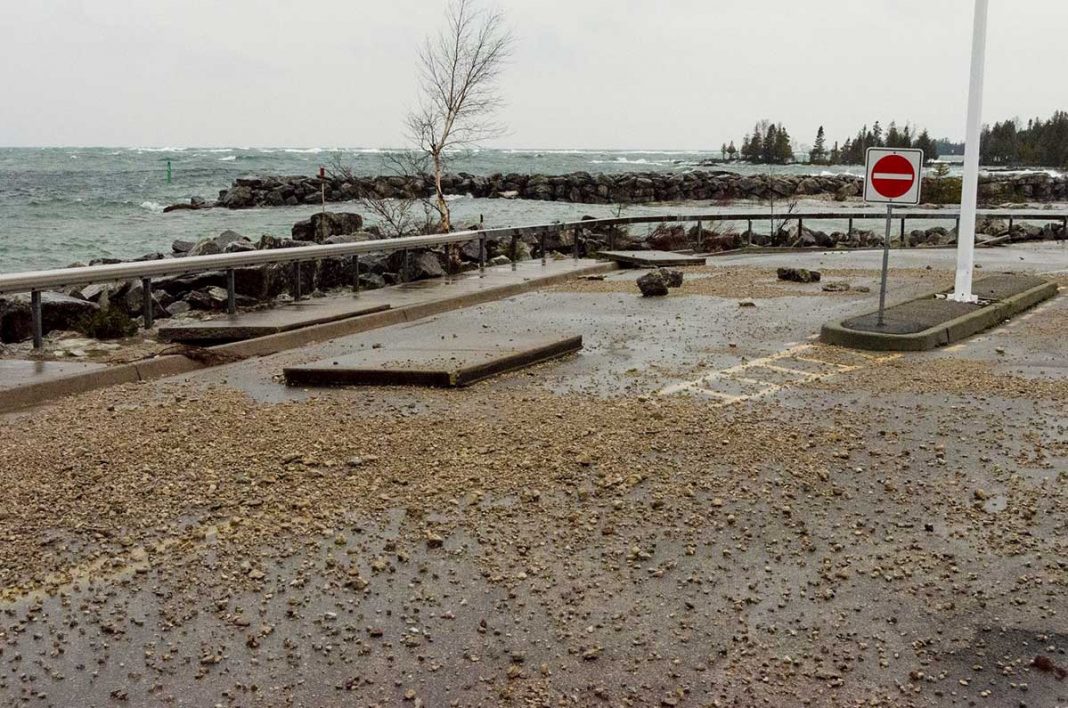Island municipalities know first hand the cost of rising waters
TORONTO – The financial costs of a changing climate are becoming evident as severe weather across Canada caused $2.4 billion in insured damage in 2020. A report by Catastrophe Indices and Quantification Inc. ranked 2020 as the fourth highest in insured losses since 1983. Global losses from natural disasters reached $270 billion, according to Munich Reinsurance Company, also significantly higher than previous years.
Only six severe weather events accounted for more than $2.3 billion of those costs, beginning in January with a rainstorm and snowstorm in southern Ontario and Quebec, followed by a British Columbia rainstorm at the end of the month; flooding in Fort McMurray, Alberta in April/May; a Calgary hailstorm in June; storms throughout central and southern Alberta in July and August; and ending in November with an Ontario windstorm that caused $88 million in insured damage. Eight of 10 of the highest loss years on record have occurred within the last decade.
A 2020 Insurance Bureau of Canada (IBC) report found that many areas across the country are becoming riskier to insure as the risk of more frequent and severe weather events increases, with municipalities on the front line of climate change. Significant investment will be required: the report found that avoiding the worst impacts of climate change at the municipal level will cost an estimated $5.3 billion per year. Flooding, erosion and melting permafrost in Canada’s north were found to pose the greatest risk.
High water levels and storms with high wind speeds have caused damage to residential and municipal docks and marinas and eroded shorelines on Manitoulin in recent years. The breakwall at Kagawong’s small craft harbour needed shoring up during redevelopment while at South Baymouth, huge waves caused sea wall damage at the ferry terminal and caused docks in the municipal marina to let go from their moorings.
Northeastern Manitoulin and the Islands has also seen high water levels at Spider Bay Marina and the downtown docks, said Mayor Al McNevin. “We had to do the same thing that we had to do back in the late 1980s when there were also high water levels, which is to raise our infrastructure up,” he said. The Port of Little Current’s downtown docks are a significant attraction for tourism. “One of the areas that felt a big impact was the electrical hook-ups for boaters. They all had to be raised up and the wiring raised up as well because they were all under water. It was a significant cost; even the bases of the light standards on the dock all had to be raised to protect the wiring from the water. Every time the wind blows from east to west, we seem to end up with a seiche event and those can raise the water level several feet.” (A seiche is the rocking motion in a lake or other closed water body where winds cause the water level to rise at one end with a corresponding drop in level at the opposite shore.)
“We had to find a way to get ahead of that story,” he added. “The water was pretty close to the all time high and going another foot or two up could cause a lot of damage. We’ve had to actually cap our docks downtown. Spider Bay has floating docks but you still have to have them fastened to a fixed structure at the shore end and they had to raise those up as well.”
Climate change seems to be making water levels more erratic because of the storms, with the biggest impact felt on the waterfront, the mayor said. “We’re seeing the same impact on the residential shoreline, on cottages and docks. People have had their longstanding fixed docks or cribs completely destroyed by storms and fluctuating water levels. I don’t know how many people have been impacted but they have been impacted and I’m one of them.”
Taxpayers and insurers share the cost for severe weather damage, according to the IBC. For every dollar paid in insurance claims for damaged homes and businesses, Canadian governments and taxpayers pay out much more to repair public infrastructure that severe weather has damaged. Canada lacks a national adaptation strategy with measurable targets and the accompanying investments needed, the IBC said.
Responding to the increasing frequency and severity of natural disasters due to climate change as well as continued urbanization in high risk flood plains, the federal government announced the creation of a Task Force on High Risk Residential Flood Insurance and Strategic Relocation in November 2020. The IBC reported that more Canadians are exposed to flooding than to any other climate-related peril. “This is a foundational step in an urgent national effort to better protect Canadians, adapt to our changing climate and build more climate resilient communities,” stated IBC. The main goal of the taskforce is to develop a new low cost national flood insurance program to protect homeowners at high risk of flooding and without adequate insurance protection. The taskforce was to begin work in January 2021 with a final report expected in 2022.






